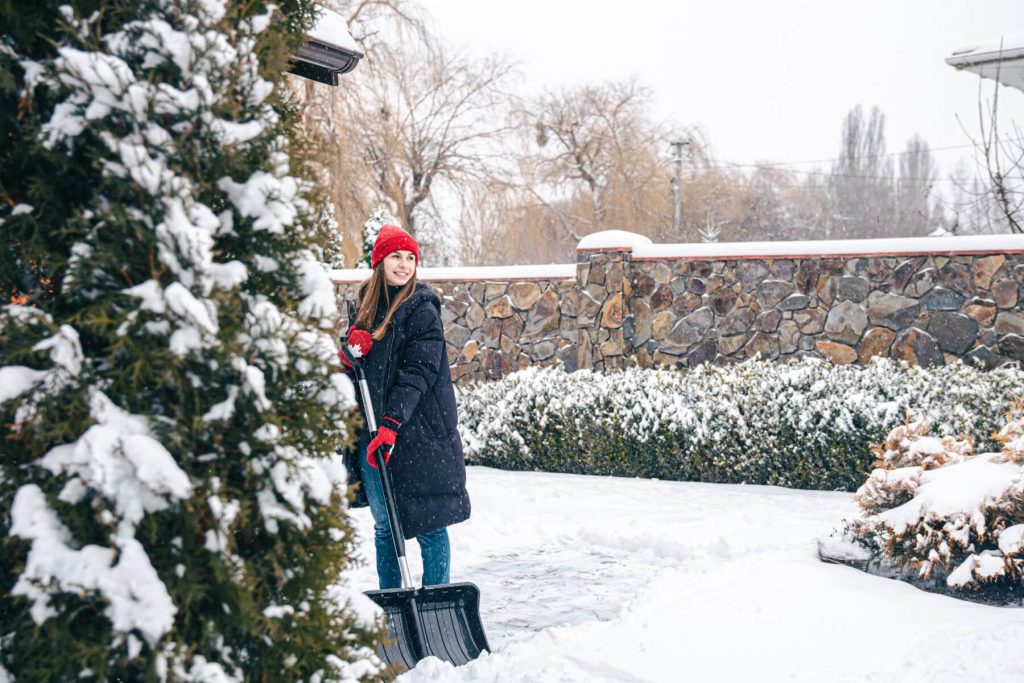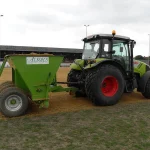As the days grow shorter and the temperatures begin to drop, gardens will need a little extra care to stay healthy and survive the colder months. Winter can be tough on plants, lawns, and soil, but with the right preparation now, you’ll protect gardens from damage and give them the best possible start when spring returns, saving yourself a lot of time and money!
Starting preparations early gives your garden a head start for the next growing season, making tasks like weeding, soil assessment, and winterising much more effective.
From tidying up borders to improving soil health, here’s how you can get your garden ready for winter.
Introduction to Winter Garden Preparation
Preparing your garden for winter is a crucial step in maintaining its health and beauty year-round. As the autumn months draw to a close, it’s time to start preparing your garden beds and outdoor space for the challenges of winter. Clearing away dead vegetation, adding a thick layer of mulch to your beds, and protecting tender plants from frost damage are all essential tasks. Planning ahead now will help shield your garden from the harshest cold, ensuring that your raised beds, potted plants, and garden soil are ready to burst back to life when spring arrives. Whether you’re considering cover crops for added protection or simply want to keep your garden for winter looking its best, taking these steps will help your plants thrive and make your spring gardening much easier.
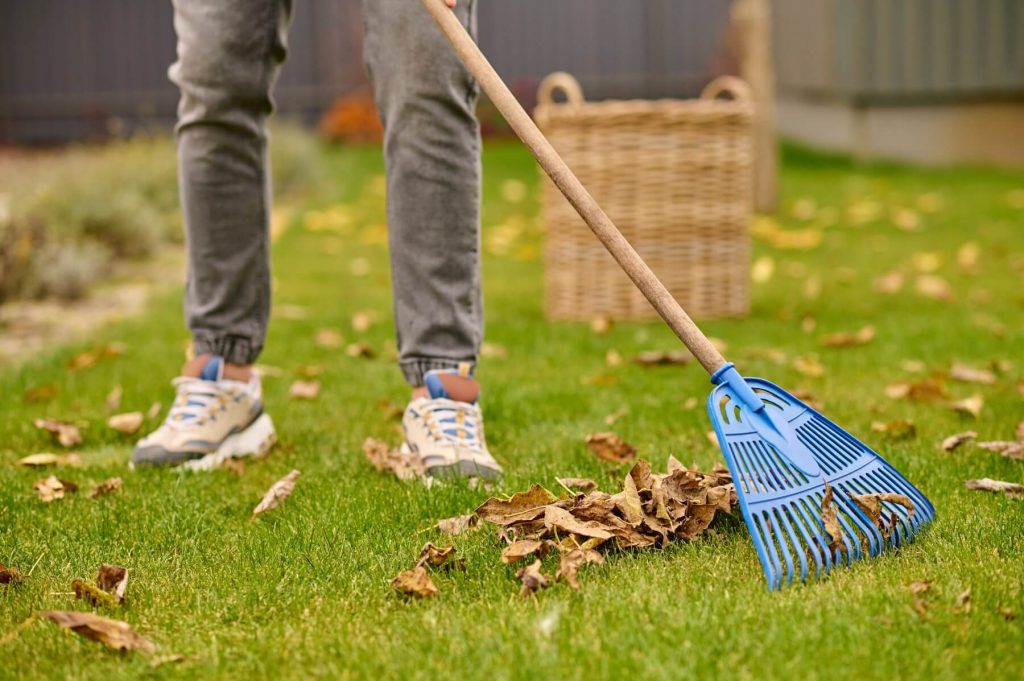
Garden & Plant Cleanup
De-weed your garden
Annoyingly, weeds don’t take a break for winter, and if they’re left in place, they’ll compete with your plants for vital nutrients once spring arrives. Take the time to remove weeds from beds, borders, and even between paving stones. Be sure to also remove any grass that may be encroaching on beds or borders as part of the de-weeding process. Gardeners should be proactive in weed and grass removal to maintain healthy beds. Clearing them now not only tidies up your garden but also helps prevent them from spreading seeds and becoming a bigger problem next year. For best results, pull weeds out by the roots and consider adding a layer of mulch or topsoil to suppress any that might try to return.
If you need any advice on what the best mulch or topsoil is for your garden, feel free to contact us by clicking here.
Up-root annual flowers
By the end of autumn, most annual flowers will have completed their life cycle, especially as the summer gardening season comes to a close. Removing them frees up space in your beds and prevents decaying plants from harbouring pests and diseases over the winter months. Gently pull up any remaining annuals, shake the soil from their roots, and add healthy plant material to your compost pile if suitable. This creates a clean slate for your garden, making it easier to enrich the soil and prepare for spring planting.
Leave your perennials alone
Clear away any unwanted plant material to your compost heap and trim back perennial plants to soil level. At the same time, it’s best to leave the soil largely undisturbed, as over-digging can remove the natural layer of decaying matter that helps protect it over winter. Allowing this natural layer to remain preserves soil structure, retains nutrients, shields the garden from the harsh effects of frost and cold weather, and supports the overall well-being of your garden’s soil and plants.
Tidy up garden borders
Give your garden borders a neat, polished look by smoothing the soil and trimming the edges. Rake away any debris and gently firm the soil to create clean lines along paths and flower beds. This simple step not only makes your garden look well-maintained during autumn and winter but also makes spring planting easier.
Blow or sweep
As you’re most likely aware, fallen leaves, twigs, and garden debris can quickly accumulate on paths, patios, and driveways during autumn. Using a leaf blower or broom to clear these areas not only keeps your garden tidy but also prevents slippery surfaces and reduces the risk of moss or algae growth. It’s important to keep the ground clear of leaves and debris to prevent issues like moss and algae, and to maintain a healthy foundation for your garden beds. Sweeping regularly also helps keep compost and soil free from unwanted debris, making garden maintenance simpler overall.
Make leaf mould
Leaves are not just garden waste – they’re a valuable resource for creating nutrient-rich leaf mould. Simply collect fallen leaves, pile them in a dedicated corner or bin, and allow them to decompose over time. Leaf mould improves soil structure, retains moisture, and adds organic matter, making it an excellent natural soil conditioner for beds and borders. It’s a cost-effective, eco-friendly way to recycle garden waste and prepare your soil for healthier plants in the coming seasons. By starting your leaf mould now, you’ll have a rich, usable product ready for spring planting, saving you money on compost and helping your plants grow.
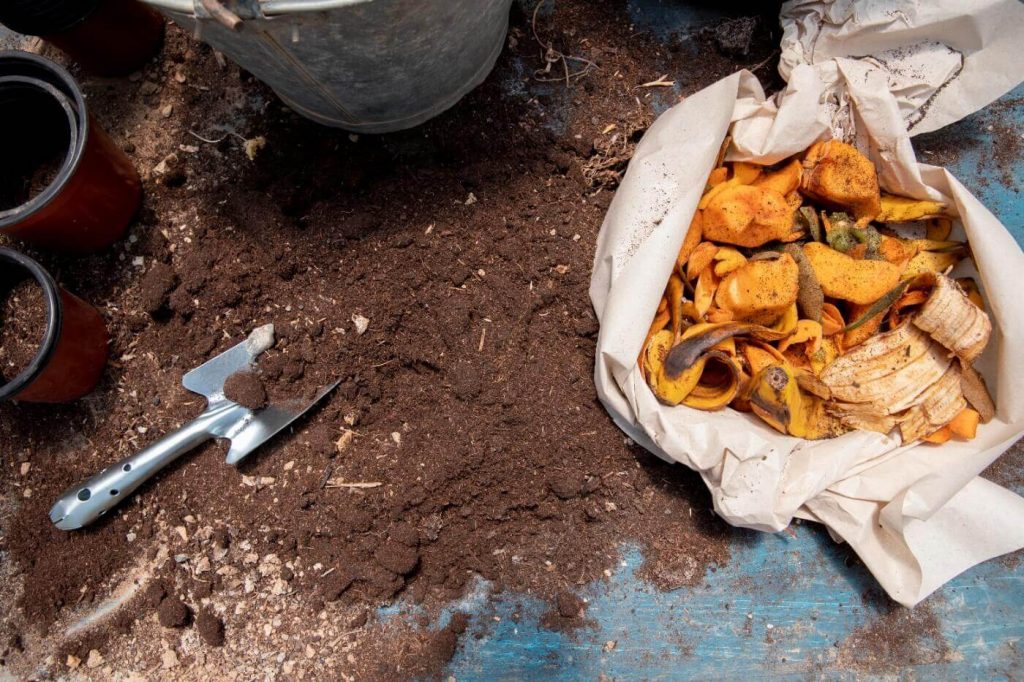
Clear out compost bins
Autumn is a great time to check your compost bins and remove any finished compost. This ensures your bins have room for fresh autumnal materials like leaves for leaf mould, vegetable scraps, and plant trimmings. Turning or aerating the compost helps speed up decomposition and prevents odours or compacting. Clearing out old compost also gives you a supply of nutrient-rich material to use in your garden beds, borders, or pots next season.
Cover up or store garden furniture
Cover tables, chairs, and benches with waterproof covers or store them in a shed or garage if possible. This not only prolongs the life of your furniture but also keeps your garden looking tidy during the off-season. For wooden or metal pieces, a little cleaning and treatment before storage can prevent rot and rust. Taking these precautions now will save time, effort, and replacement costs when the garden season returns, ensuring your furniture is ready for use next summer.
Net ponds
Autumn leaves can quickly fall into ponds, causing blockages and decay that can harm fish and plants. Installing a pond net is an easy way to catch falling leaves and keep the water clean. This reduces maintenance, prevents excess nutrients from building up, and keeps aquatic life healthy over the winter months. Regularly removing debris from the net will also help prevent water stagnation.
Plant spring-flowering bulbs / Bulbs for next year
Autumn is the ideal time to plant spring-flowering bulbs such as daffodils, tulips, and crocuses. Planting now allows roots to establish before the cold sets in, ensuring strong, healthy growth in spring. Choose well-drained soil and plant bulbs at the correct depth, spacing them to allow for mature growth. You can also plan ahead for next year by planting hardy perennials and bulbs that will flower after the vibrant summer months, preparing your garden for a beautiful transition into autumn and winter.
Planting and pruning fruit trees and bushes
Winter is a good time to plant bare-root fruit trees and bushes, as the soil is moist and the plants are dormant. In cold climates, take extra precautions by wrapping trunks or using protective materials to shield trees from frost, sunscald, and frost cracks. Choose a well-drained site, dig a suitable hole, and use quality topsoil to give roots a nutrient-rich start. At the same time, prune existing fruit trees and bushes to remove dead or weak branches, shape the plant, and encourage better airflow. Proper pruning and planting now will lead to stronger growth, healthier fruit, and an easier harvest in the coming year.
Maintaining Raised Beds
Raised beds can be especially vulnerable during the winter months, so giving them a little extra care will pay off when the growing season returns. Start by removing any dead vegetation and weeds from your raised beds to prevent disease and pests from overwintering. Next, use a garden fork to gently aerate the soil, being careful around any perennial plants that will return in spring. Add a generous layer of organic matter, such as compost or well-rotted manure, to enrich the soil and improve its structure. To further protect your raised beds from soil erosion and cold temperatures, cover the surface with a thick layer of mulch or straw. This helps retain moisture, suppress weeds, and insulate plant roots against winter’s chill. By maintaining your raised beds now, you’ll ensure they remain healthy, fertile, and ready for planting when spring arrives.
Preparing Potted Plants
Potted plants are particularly susceptible to cold weather, so it’s important to take steps to protect them as winter approaches. If possible, move your potted plants into a sheltered area like a greenhouse, conservatory, or even a protected porch to shield them from frost and heavy rain. For those that must stay outdoors, wrap the pots with bubble wrap or horticultural fleece to insulate the roots and prevent frost damage. Adding a thick layer of mulch on top of the soil in each pot will also help retain warmth and moisture. If you can’t bring your potted plants inside, group them together in a sheltered spot, such as against a south-facing wall or under a sturdy tree, to provide extra protection from harsh winds. These simple steps will help your potted plants stay protected throughout the winter months and ensure they’re ready to thrive when spring arrives.

Soil Preparation
Preparing your soil for winter helps protect your garden and gives plants the best start for spring. Start by loosening compacted soil and removing any large debris or stones. Before winter weather arrives, it is important to add mulch to your garden beds to insulate the soil, protect plant roots, and prevent soil erosion. Snow can compact soil and cause damage if the ground is not properly prepared, so taking steps before snow accumulates is essential. Adding a layer of high-quality topsoil can improve soil structure, enhance drainage, and increase nutrient retention, which helps prevent water-logging and frost damage over the colder months. We supply a topsoil made specifically for winter, that is screened to 10mm for a smooth, consistent texture which will help your lawn survive winter, thanks to its natural structure and drainage.
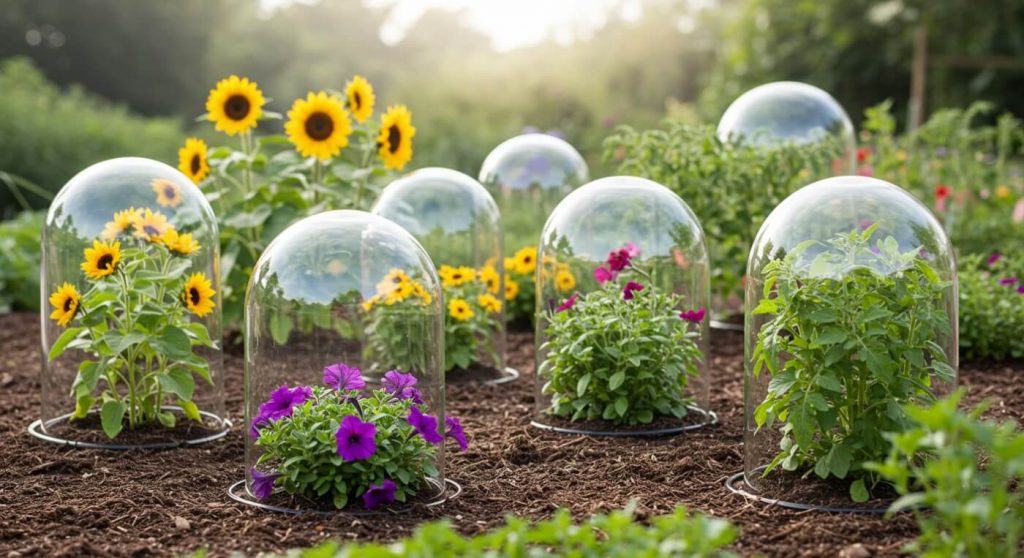
Garden Protection & Maintenance
Protect tender plants
Cold weather can be tough on tender plants, so it’s important to shield them from frost and harsh winds. Horticultural fleeces are a lightweight, effective way to insulate tender and young plants from frost and cold weather. Use fleece, cloches, or horticultural covers to wrap vulnerable plants (more information on this below!) and consider moving potted or container plants into a sheltered spot. Additionally, mulching around the base of plants helps insulate roots and retain moisture, while creating a layer of protection against frost heaving.
Prune your roses
Late autumn or early winter is the ideal time to prune roses, as the plants are dormant and less prone to stress. Remove any dead, diseased, or crossing stems to improve airflow and reduce the risk of disease. Cut back remaining healthy stems to encourage strong new growth in spring. Make clean, angled cuts just above outward-facing buds, and tidy up the area around the base of the plant. Proper winter pruning helps roses produce healthier, more abundant blooms next season.
Place plants in a cold frame
A cold frame is a simple yet effective way to protect tender plants during the colder months. By placing plants inside, you create a warmer, sheltered environment that shields them from frost, wind, and heavy rain. Cold frames also allow you to extend the growing season for hardy vegetables, herbs, and young seedlings. Position the frame in a sunny spot to make the most of available light during the shorter winter days, and ensure good ventilation on milder days to prevent overheating.
Cover plants with a garden cloche
Garden cloches are a great way to protect individual plants or small groups from frost and harsh winds. They act like mini-greenhouses, trapping heat and moisture around the plant while keeping cold air out. You can use glass, plastic, or fabric cloches depending on the size of your plants and how much airflow they need. Cloches are particularly useful for young seedlings, delicate herbs, or newly planted flowers, helping them survive the winter months with minimal stress and damage.
Add windbreaks
Strong winter winds can dry out plants and damage exposed stems and branches. Installing windbreaks such as fences, hedges, or temporary screens can significantly reduce wind exposure and protect vulnerable areas of your garden. Even simple solutions, like burlap screens or strategically placed boards, can help shield delicate plants. Windbreaks not only reduce stress on your garden during the cold months but also prevent soil erosion and moisture loss, keeping plants healthier until spring.

Protect outside taps
Outside taps are vulnerable to freezing temperatures, which can cause pipes to burst. Frozen hoses can also cause burst pipes, leading to costly repairs, so draining hoses helps prevent this damage. To protect them, drain any attached hoses and cover taps with insulating materials, such as foam tap covers or waterproof fabric. For added protection, you can use pipe lagging or wrap taps in bubble wrap to prevent frost damage.
Add organic materials
Adding organic materials to your garden during autumn and winter helps improve soil structure, retain moisture, and provide essential nutrients for plants come spring. Using high-quality topsoil or compost products can enhance these benefits, creating a rich, fertile base for borders, beds, and vegetable patches. Mulching with leaves, bark, or well-rotted compost also protects soil from frost and erosion, while gradually enriching it as the materials break down.

Regular maintenance of driveways and patios
Keeping driveways and patios well-maintained during autumn and winter is essential to prevent moss, algae, and water damage. As the nights draw in and daylight hours become shorter in autumn, it becomes even more important to keep these areas clear and safe. Regular sweeping or blowing away leaves and debris helps maintain a safe, tidy surface, while checking for cracks or uneven areas allows you to fix issues before they worsen. For driveways, adding a fresh layer of aggregate can improve both durability and appearance.
We’d recommend 20mm stone is particularly ideal for driveways, providing a strong, stable surface that allows good drainage and resists frost damage. Routine maintenance ensures your hard landscaping stays functional and attractive throughout the colder months.
Protect your garden from water-logging and flooding
Autumn and winter rains can lead to water-logged soil, which stresses plants and can damage lawns, beds, and borders. To prevent flooding, improve drainage by lightly aerating compacted soil and adding organic matter such as compost or mulch to help absorb excess water. Consider creating gentle slopes or channels to direct water away from vulnerable areas, and check that drainage systems, gutters, and nearby drains are clear and functioning. By taking these precautions, you’ll reduce the risk of water damage and help your garden stay healthy throughout the wetter months.

